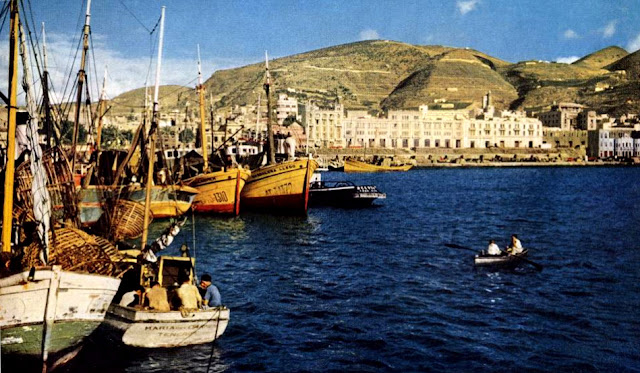Preparing the fish fishmongers “jareado”
In recent weeks the Internet has circulated a copy of an article on Canary, published the year 1955, in the American magazine National Geographic Magazine. It is a first-rate graphics documents for understanding cambio radical has experienced in this archipelago of fifty years as a solo.
In esa Reseña, acompañada shocking unas imágenes de las Islas, Jean and Franc Shor presentaban las Costumbres, them the cities and landscapes of the Canary Islands more Highlights, as an idealized paradise floral friendly inhabitants Dedicated las Labores agrícolas. Well dirían: There hay trabajo y comida para todos: los precios y los salarios are on.
Ideologically, the image of the Canary Afortunadas habitat is rebuilt from the late nineteenth century under a idealized interpretation of the Past, reflected throughout most of the text and illustrations, masking a straitened times in which was very sad Canary economically. They were years in which the islanders tried to leave their backwardness, projecting abroad as a way of scenery and unique culture in search of mass tourism. This explains thoughts like the following: The Corpus Christi is the time when people wear their nicest clothes, there singing and dancing day and night. Canary is always wonderful and I think I will like the islands of Fortune, in the words of Francisco Pérez Naranjo, contained in Article. In colorful islands, Native pave the streets with petals at the time of Corpus, Shor also say
Tourism is a way to present the attractions of a place like intangible economic resources rely on the photographic image. Some of this has been explained Carmelo Vega in his book, Logical Photo Tourist.
The interesting, in this case, is to analyze in detail the combination of images interspersed, that teach the territory, urban forms and customs festive, almost ready for contemplation. A Canary imagery exhibiting a scenic pastoral culture, chaired by beautiful young fishers and farmers radiant. But also a territory with stunning landscape possibilities.
The carpets of Corpus Christi in León y Castillo Street beside the San Telmo Park in Las Palmas
In 1955, coastal areas of the cities of Las Palmas de Gran Canaria and Santa Cruz de Tenerife, had not yet suffered the powerful transformations that involved the construction of Maritime Avenue, on the one hand, and occupation by the barrier of buildings Marina Street, other. The main street of the town of La Laguna appears inhabited by pilgrims and their livestock, with all the traditional houses that existed, intact; while, on the island of Lanzarote, a peasant family mounted his camel through an interior landscape of Haria Valley, widely cultivated; and in the Llanos de la Palma, a group of children appear next to your home, surrounded by flowers and cacti.
The seafront of Santa Cruz de Tenerife, en 1950
Bucolic images of Los Llanos, on the island of La Palma and Lanzarote farmers
The agricultural landscape of the valley of Haria in Lanzarote
Dairy Tenerife, with his tools stored, displacement in common to the city
It has attracted attention in particular a photograph: dairy group travel in an old bus, with their jars stacked on the roof. A regular characters in urban settings of my childhood, livestock products offering their craft by houses and gathered, turn, food scraps to feed their animals. A true combination of informal recycling work efficiently without bureaucratic requirements, supervisions and current permits.
Item, The Canaries, the fortunate islands of Spain, outlines a vision of a simpler time and simpler than the one we live in recent decades.
The Race Street City of La Laguna, in full Pilgrimage of San Benito. Tenerife, 1955









Most were not born or were not here.
what a coincidence, I got a post about this yesterday: http://www.facebook.com/l/9e510/tallerdeaccionescreativas.blogspot.com/
The truth that many of these things and I would count my grandmother and my mother also some It was a simpler time, lasts insularity conditions, but where anyone who wanted, worked and although there needs, and in … 50 not starved (or at least that's what I cuentasn my). One thing is true, is that although the paiaje has changed greatly, people customs and little or so it seems to me
It was a simpler time, lasts insularity conditions, but where anyone who wanted, worked and although there needs, and in … 50 not starved (or at least that's what I cuentasn my). One thing is true, is that although the paiaje has changed greatly, people customs and little or so it seems to me 
That impression! Much remember perfectly. Tower is perfectly distinct from my school, go to look so bad now between building.
fede , very well to remember our past , recent, I like to see those pictures of how we were ….but I do not see any .. q passes ..